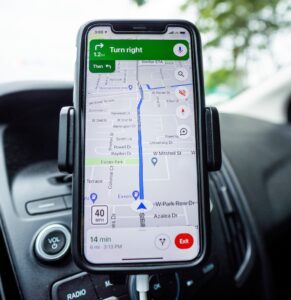Many local wellness businesses start on a tight budget and hustle to get a website up as quickly as possible. While having a website is essential, it’s well worth an extra investment of time to ensure your local website will start ranking high on Google as quickly as possible.
As more people are becoming proactive about their health and wellness to take care of themselves and their families, it is important for them to find local practionioners they can truly trust. One of the best ways to ensure you connect with the people who need you most is to build your website, from the start, with accurate, authentic, and actionable information. And these just happen to be the basic tenents of SEO.
Get Detailed With Your Offerings
When building your website, it’s vital to showcase what you do and how it can help visitors with clear, specific details. One effective way to do this is by creating landing pages dedicated to each service or class you offer. These pages should include detailed descriptions of exactly what’s offered, along with any benefits or outcomes your clients can expect. You should also consider incorporating client testimonials or before-and-after photos to further highlight the effectiveness of your offerings.
It’s also important to clearly state the locations and hours of operation on your website, making it easy for potential clients to know where and when they can access your services.
Another effective way to showcase your local wellness business is by highlighting your expertise and staff. Consider creating videos where you share your story, specialties, and unique approach to wellness. Showcasing your space through a video tour can also help potential clients get a better sense of the atmosphere and environment of your business, making it easier for them to envision exactly what lies in store.
Create Content that aligns with the search intent of your clients
To improve the SEO success of your website, it’s important to create content that aligns with the search intent of your clients. This means optimizing your content to align with your clients’ search intent based on certain keywords that your target audience is using to search for the services they need. For example, if your audience is searching “yoga for pregnancy,” the search engine will present your business more readily if you make sure to detail your prenatal yoga classes and your prenatal credentials.
When creating content for your website, it’s helpful to capitalize on these four types of search intents:
Informational: This involves clients looking for information about a particular topic or issue related to wellness. By creating content that answers these questions and provides valuable information, you can establish your business as a trusted resource in the wellness industry.
Navigational: This is when clients search for a specific website or location. By optimizing your website’s content and structure to make it easier to navigate and find the information your clients are looking for, you can improve their overall experience.
Commercial: This is where clients are looking for products or services related to wellness, such as wellness workshops, yoga classes, or aromatherapy. By highlighting your offerings and their benefits, you can attract potential clients to your business.
Transactional: This involves clients looking to make a purchase or book an appointment with your services. By optimizing your website’s content and functionality, you can streamline the client journey and improve the likelihood of booking clients.
Craft Compelling Title Tags and Meta Descriptions
In order for your website to rank high on search engines, it’s essential to tailor strategic title tags and Meta descriptions. Here are a few strategies to consider when creating title tags:
- Keep your tag limited to 60 characters since Google only shows 50-60 characters of a title tag.
- Include your keywords to optimize the tag, but avoid over-stuffing them.
- Keep the search intent for your potential clients in mind when creating the title.
- Make sure the title is brief but descriptive
- Avoid using duplicate title tags to follow Google’s guidelines
Similarly, for Meta descriptions, you could follow these guidelines:
- Limit your description to 155-160 characters as that’s the character limit. Google only shows limited content below your title tag to generate interest in your website.
- Include keywords and align the description with your potential clients’ search intent.
- Start by targeting the problem before offering the solution in your descriptions.
- Give a concise but attractive plot of your page that appeals to users to click and explore more.
Optimize Your Website for Mobile & Tablet Users
As more and more people access the internet solely through their mobile or tablet devices, it is crucial to optimize your website for all devices, to ensure a smooth website experience. Google ranks websites based on several factors, with mobile-friendliness being a primary one. Therefore, it is vital to create a mobile version of your website in addition to your desktop version.
It is also important to remember that mobile-friendliness can greatly impact your website’s ranking on the SERPs. Google must be able to scan every page of your website quickly and easily, so your website can rank higher on the SERPs. Ensuring that your website is mobile-friendly can help you reach a wider audience, improve your website’s visibility, and ultimately, drive more traffic to your website.
Experiment with Your Website’s Images
On-site SEO and design are often overlooked in the effort to improve website content for search engine optimization. However, local health and wellness businesses should not forget that images can significantly impact a user’s experience with their website and can generate organic traffic. More than 72% of global users first search for images when purchasing a product. This means that having high-quality images of your services, such as your yoga or meditation classes, can attract potential customers to your business.
Optimizing images for search engines can help your business rank higher in the SERP through Google’s images section. To do this, you should consider the following:
Image compression: Compressing images before uploading them can improve website speed.
File Format: Choosing the appropriate file format, such as JPEG, PNG, and WebP can limit the size and speed of web pages.
Alt-Text: Adding relevant and informative alt-text with appropriate keywords can help search engines understand the image and improve overall website SEO.
Boost Page Speed
Most people searching the web for a local wellness business are squeezing in time to take care of their health. They want to find relevant information quickly and easily, which means that your website’s speed is critical.
Here are some tips to help you speed up your website:
- Enable browser caching to help your website load faster for returning visitors.
- Remove any unnecessary plugins that may be slowing down your website.
- Decrease your server response time by choosing a reliable hosting provider.
- Minimize the use of redirects, which can add extra time to your website’s loading process
- Reduce the size of your CSS and JavaScript files to help your website load faster.
Optimize Internal Linking on Your Local Wellness Website
Internal linking is essential and can significantly enhance your website’s rankings. By properly utilizing internal links, you can improve your website’s information hierarchy and help search engines better understand your content. Interlinking relevant information between pages can also provide a smoother user experience and help visitors find the information they need more easily.
Elevate User Experience
User experience is the most intuitive aspect of SEO. If a potential client finds your website intuitive and informative and enjoys clicking around and learning about your offerings, it’s more likely they’ll come visit your local wellness business. Plus, Google pays close attention to how users interact with your website. If they leave quickly, it can negatively impact your website’s rankings, but if they stay for a while, it can improve your rankings. Here are some things to consider to improve the user experience and web design for your local wellness center’s website:
- Make your text easy to scroll through and understand by using subheadings, bulletpoints, and bold/italics.
- Keep website colors consistent and simple, to achieve a clean, minimal, and easy to navigate feel
- Maximize page speed to ensure your website loads quickly and efficiently.
- Incorporate images, videos, and other visuals to make your content more appealing and engaging for users.
- Use white space to make your content more readable and comprehensive
- Make sure your website is accessible to all users, including those with disabilities.
- Avoid using pop-ups unless absolutely necessary as they can be annoying and cause users to leave quickly.
Enhance your Website’s URLs
Every page of your local wellness business’ website will contain a URL, which should be well-thought out every time. A well-crafted URL is an easy way to improve your website’s search engine optimization – and they’re easier to navigate. Here are some tips to make your URLs more user and SEO-friendly:
- Keep your URLs short and to the point.
- Avoid using unnecessary words like “and,” “the,” or “a” in your URL.
- Include your target keywords in the URL, but don’t overdo it.
- Use readable words instead of long ID numbers.
Developing a Website for SEO Success
By incorporating on-page optimization tactics such as internal linking, optimizing page titles and meta descriptions, and ensuring a mobile-friendly and fast-loading website, you can improve your website’s visibility and attract more potential clients.
Optimizing URLs and making your content align with search intent can further boost your website’s ranking on search engines. By following these SEO guidelines, you can position yourselves for success in a competitive digital landscape and attract more clients to your services.







